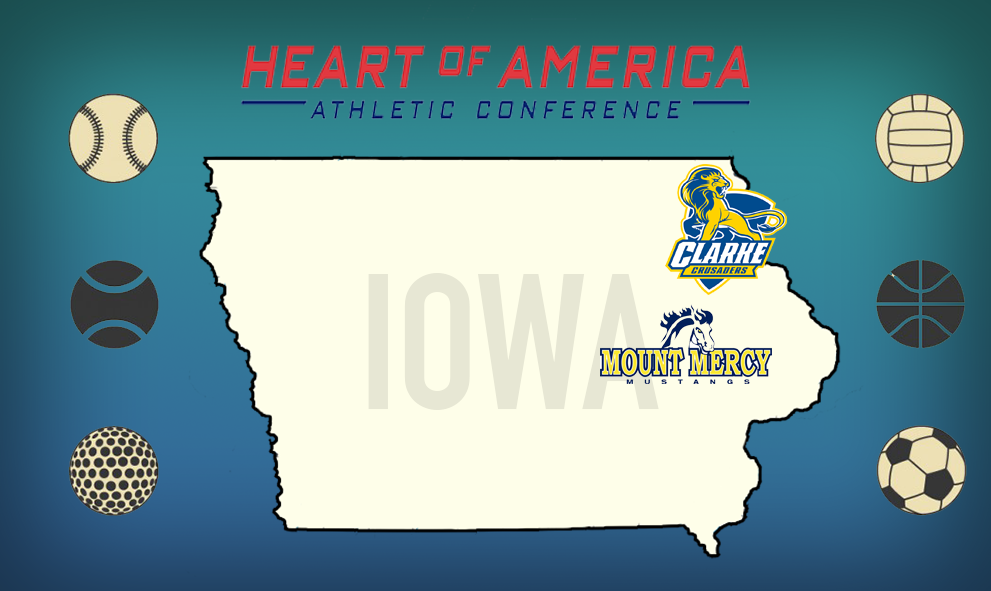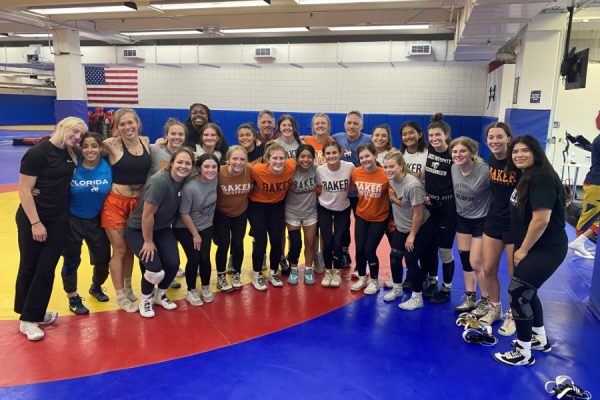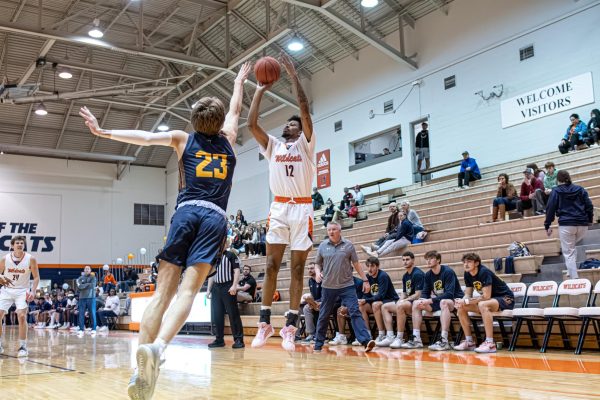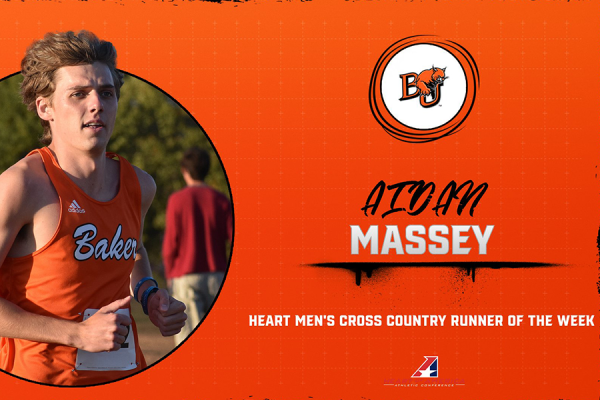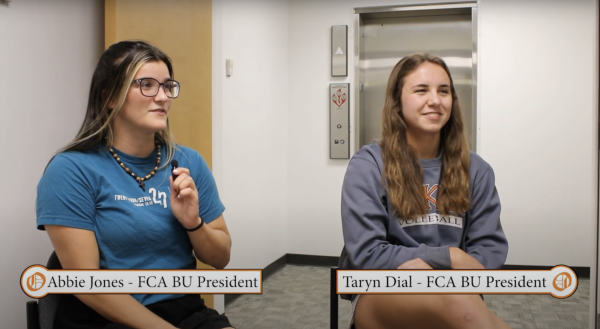Heart Conference adds two teams
Image by Maria Echeverry.
Two Iowa institutions have joined the Heart of America Athletic Conference starting this season. Baker University will now face off against Clarke University from Dubuque, Iowa, and Mount Mercy from Cedar Rapids, Iowa, in a number of sports.
Both institutions were originally in the Midwest Collegiate Conference and were able to join the Heart immediately to participate in administrative matters and strategic planning in April of 2015.
Clarke and Mount Mercy were not able to compete in on-field competition until the 2016-2017 academic year, however.
The addition of these two schools brings the total number of Heart members to 14. This is the largest number of schools to be a part of this conference in its 45-year history.
These additions come just one year after the previous expansion of the Heart. Last year the Heart welcomed William Penn University and Grand View to the conference. Baker’s Athletic Director Theresa Yetmar says the addition of two more schools is not that different than the previous years.
“They have a similar institutional profile, so it’s a small liberal arts college. They have some kind of religious focus, but it’s not the main driver,” Yetmar said. “They both have at least 20 sports like a lot of our schools do in our conference, so I think that overall they kind of fit the profile of our institutions.”
Both institutions will compete against Baker in men’s and women’s cross country, men’s and women’s soccer, volleyball, men’s and women’s basketball, men’s and women’s indoor track and field, baseball, bowling, softball, men’s and women’s outdoor track and field and men’s and women’s golf.
The biggest sport missing from the list is football. Mount Mercy University doesn’t currently have a football program, and Clarke University announced it will start a football program for the 2018 season.
With the addition of these two institutions, Baker had to make decisions on how it would structure athletic schedules to accommodate the expansion of the conference.
“I think we’ve gotten to the place where we’ve tried to be consistent where we can. If within a sport we decide to play in divisions, the divisions are always the same, so those have been set,” Yetmar said. “I think that’s important, but we wanted to do what was best for the sport.”
When it comes to football, the conference is in divisional play, which automatically gives both the North and the South division champions a berth in the NAIA FCS playoffs.
As for soccer, the number of schools makes it so that the conference can play a single round-robin and still have roughly six non-conference games. These contest limitations still give Baker the ability to continue to play schools regionally and across the country, giving Baker the opportunity to gain a look and feel for national rankings.
The addition of these schools may take a toll on athletes. If the game isn’t at home, then Baker teams will be looking at five or more hours of travel to some games.
“The travel for those schools for us become some of our longest trips, and so I think that with the help of a conference scheduler, (we are) trying to minimize missed class time so it still feels similar to when we had 10 or 12 schools,” Yetmar said. “So, we are cognizant of those potential pressures on student-athletes. Ultimately at the end of the day, in order to be eligible for conference, postseason and things like that, we need to play all our games.”
In order for an institution to join the Heart of America Athletic Conference, it must first fill out an application, which Heart Commissioner Lori Thomas then reviews. The application is then reviewed by presidents, and if there is interest shown, a task force is created to go and view the institution. This task force includes at least one president, the commissioner, one athletic director and one faculty athletic representative.
The information gathered by this task force is brought back to the Board of Governors, which is comprised of every director of athletics and every faculty athletic representative in the Heart conference. This board then discusses the information to vote on whether the institution should be added.
“We do get a vote, but ultimately that vote is just an indicator for the presidents who make the final call,” said Yetmar. “Ultimately, all the presidents sit on the Presidents Council and they decide any additions for membership.”
With this being the second addition in recent years to the Heart conference, the question of “how many schools is too many?’ may soon need to be asked.
“I think 16, at this point, would probably be an ideal number, because then you would have eight and eight in terms of divisional play, which makes for a cleaner schedule,” Yetmar said.


